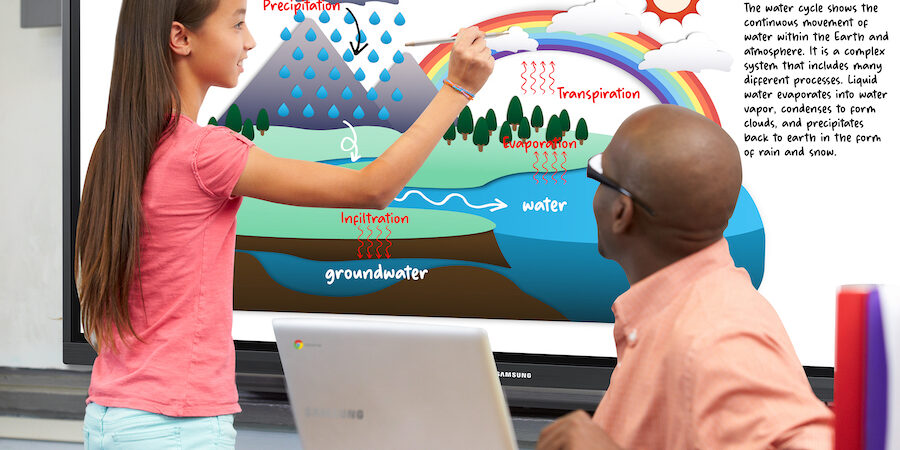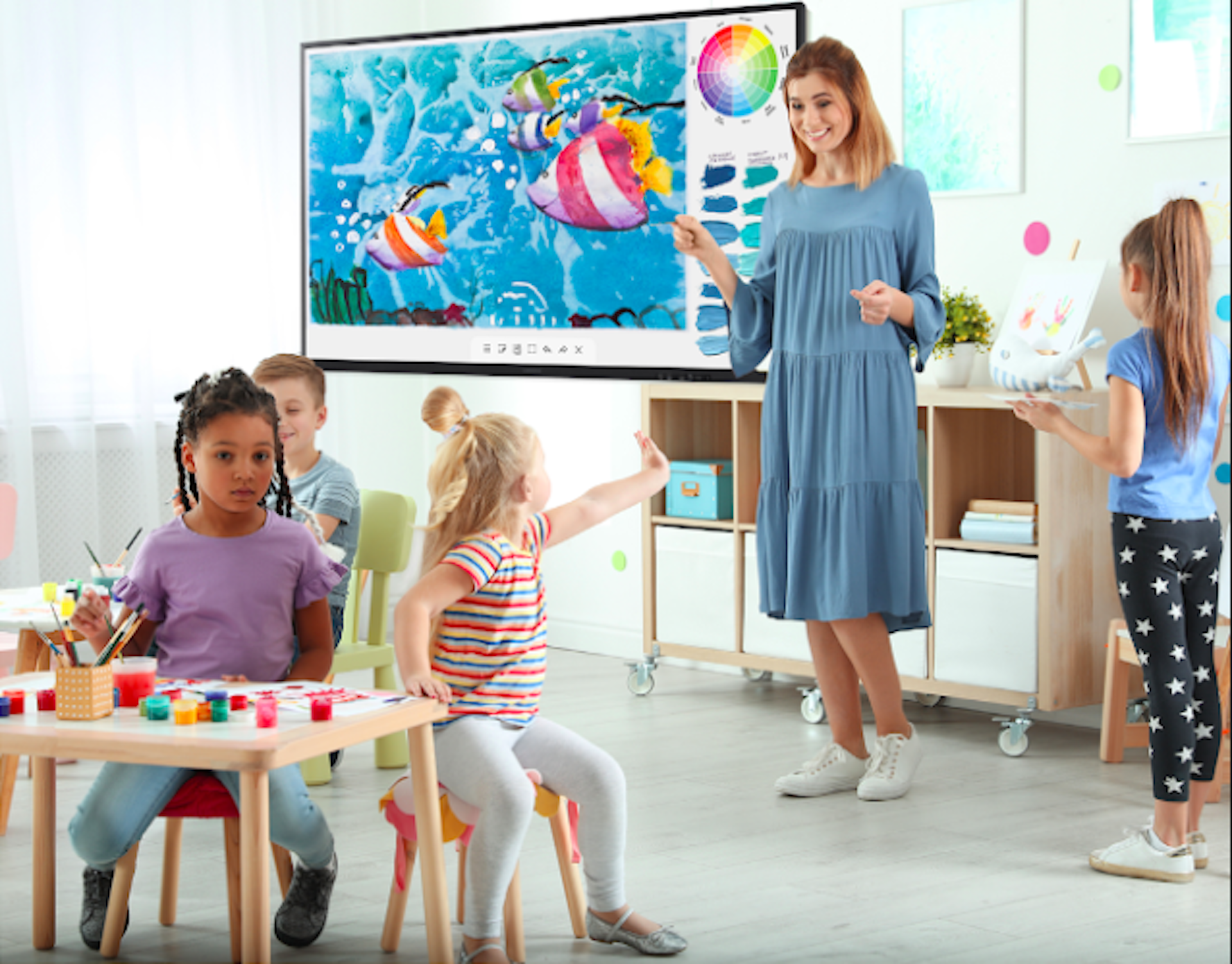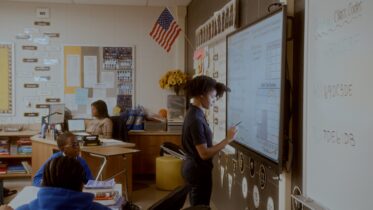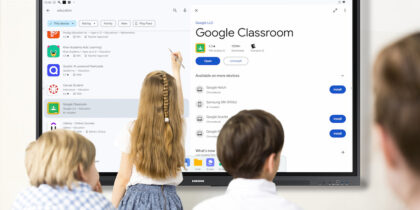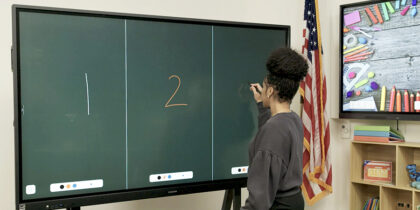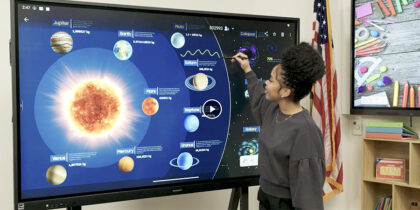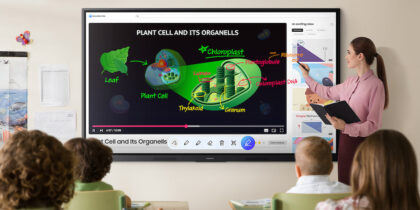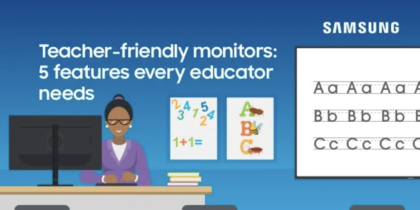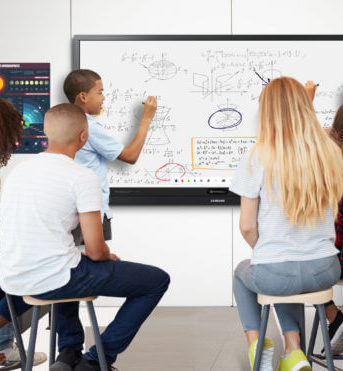Educators are always seeking opportunities to elevate the learning experience and help every student succeed. An interactive smart board such as Samsung Interactive Display is an effective classroom technology that can do just that.
Smart boards are especially well suited for hybrid and blended learning environments, which has increased the creation and adoption of alternative learning structures. Now, educators can collaborate with students in a more engaging way, even if they’re working remotely.
What does an interactive whiteboard do?
When it comes to idea generation and collaboration in the classroom, conventional dry-erase boards are longtime staples. They’re easy to use but also clunky and inefficient at capturing information. As student workflows become increasingly digital, they require more effective collaboration tools that allow them to quickly find, mark up and share whatever they need.
Interactive whiteboards digitize the process, taking the concept of the conventional dry-erase board or paper flip chart and upgrading it with modern educational tools. The interactive display allows students to write out their ideas, draw sketches and make calculations on a large visual platform that all their classmates can see.
How does the interactive display assist with blended learning?
Using a smart board, teachers and students can write intuitively — with their finger, a stylus, or another input device — and then save and share that content without switching devices. You can even share internet or server-based content. That includes audio and video support, allowing teachers and students to create dynamic presentations.
With the Samsung Interactive Display, you also get the following tech capabilities:
- Intuitive, convenient user experience with a customizable home screen
- Multiple Screen Mode allows split-screen and multi-window displays for flexible multitasking
- Wireless screen mirroring on up to nine devices simultaneously
- Multi-touch capabilities for multiple users to write and draw on the whiteboard at the same time
- Dual pen function for rapid switching between writing tools
- 3-in-1 USB-C port for enhanced connectivity
Supported by these core functions, teachers can easily integrate the interactive display into their classroom, lesson plans and student workflows.
What are the advantages of an interactive smart board?
In the classroom, interactive smart boards such as Samsung Interactive Display are primarily used for group collaboration and sharing educational materials. They help everyone feel connected and engaged, inclusive of hybrid or blended learning environments. Best of all, the technology is intuitive, so most students can use it with little or no training.
All of the work done on an interactive whiteboard can be instantly saved and stored. Teachers can quickly retrieve files by scrolling or searching — then, share them through the display via email, cloud drive and USB. They can also print physical copies.
The 65- and 75-inch Samsung models support sharing up to nine screens simultaneously for maximum real-time productivity, ensuring every student is included and engaged. Students and teachers can also connect their devices to the smart board by HDMI, USB-C, stereo minijack, and screen mirroring from mobile devices. Users can also apply digital pens and highlighters of various colors and thicknesses.
The Note app on Samsung Interactive Display includes 10 built-in tools for brainstorming and note-taking — annotate a photo, post a sticky note, create a mind map or grid, take measurements and more. Teachers can easily switch between the Note app and other whiteboard content.
Read the definitive guide on interactive displays
See how educators can create an inclusive learning environment with the right technology. Download Now
How to create interactive whiteboard activities for online learning
There are thousands of options and activities for teachers and students looking to get the most out of interactive whiteboards in an online learning setting. At its most basic, an interactive smart board in the classroom provides a way to display and interact with educational tools and media to the benefit of students in the room or online.
Teachers can use Samsung boards to post and share diverse types of media — pictures, charts, maps, articles, websites, graphs, audio and video — to almost any size classroom. The traffic goes both ways, too, as students can use the board for collaborative brainstorming and problem-solving, as well as educational games.
While some of these activities and resources are subscription-based, there are also plenty of free interactive whiteboard resources that are grade-specific and cover core subjects such as math, history, writing, reading and science.
How to enhance learning with interactive whiteboard accessories
While the interactive display can be used without any accessories, some, such as touch pens, can ease and enhance operation. Other optional add-ons include erasers, cameras and risers, which allow shorter students to reach the board.
With smart boards on wheels, teachers can also move the display to individual students throughout the room or share it between multiple classrooms. To upgrade capabilities more significantly, look to key technology partners that connect seamlessly to interactive display technology:
- ScoreVision enables high schools to create and push a wide variety of content to their in-venue display. Students can use the cloud-based software in the classroom for scripting the entire game time experience, for example, creating a multidimensional experience for fans.
- The HAVRION solution leverages the MagicINFO platform by Samsung to deliver dynamic site, campus and district-wide video connectivity on Samsung smart displays — for alerts, notifications, customized messaging and video streaming.
The next era of education
Interactive whiteboards enable a wide range of activities teachers can use to create more engaging lessons that get kids excited about learning. Samsung Interactive Display represents the next step in education technology, supporting collaboration and learning for all students.
Learn more about why interactive learning matters and how prioritizing it engages students and improves outcomes in this free guide. Discover a full range of Samsung Interactive Displays designed for intuitive and exciting collaboration.
